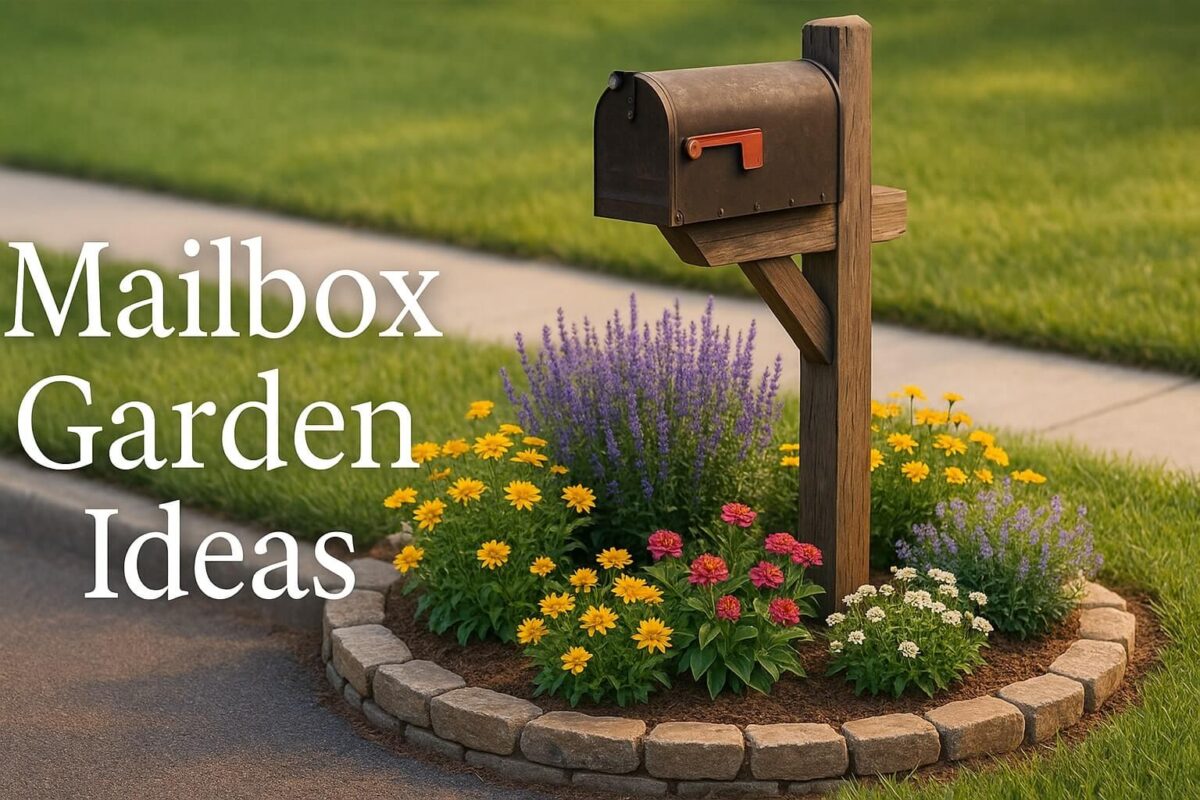There’s something quietly charming about a well-planted mailbox. Tucked between the curb and your front path, this small patch of earth has the power to say, “Welcome, you’ve arrived.” It might be the very first thing your guests see—or your postie, six days a week. That’s why more and more garden lovers are turning to mailbox garden ideas as a fun way to refresh the view without overhauling the whole yard.
And the best part? You don’t need much space to make a big visual impact. A two-foot radius, a few weather-hardy plants, and a little creative spark are all it takes to create a vibrant mini-garden that works in any season, even in tricky spots by the roadside.
Let’s walk through how to design a mailbox garden that balances beauty, durability, and postal practicality—no green thumb required.
A Tiny Garden with Big Potential
A mailbox garden is often overlooked when dreaming up landscaping plans, but it’s the perfect place to experiment with small-scale color, shape, and texture. Think of it as your home’s tiny front porch rug, made of flowers. Not only does it frame your mailbox, it brings life to a space that’s usually just grass, gravel, or worse—mud and weeds.
First things first, though: before planting anything, it’s worth checking the basics. In most areas, postal regulations ask that mailboxes sit 6 to 8 inches back from the curb, with clear access so carriers never have to leave their vehicles. So while you’re planning your design, make sure there’s a neat buffer zone where nothing droops or blocks access. That’s key.
Next comes the environment itself. Roadside gardens deal with more sun, more wind, more heat from asphalt, and more salt or slush in winter. That means tough plants are the way to go. Drought-tolerant varieties like lavender, coreopsis, sedum, or Russian sage aren’t just pretty—they’re survivors. Add in a few groundcovers like creeping thyme or low-growing zinnias, and you’ve got a full display that doesn’t mind a tough neighborhood.
Design-wise, it helps to think in layers. Try starting with a hardy evergreen or ornamental grass at the back of the bed for structure, then build forward with mid-height perennials and trailing groundcovers. Group three to five of each plant together so they form natural clusters, which feels lusher and helps pollinators find their way around.
For sunny spots, go bold with plants like phlox, rosemary, or even a knockout rose if there’s room. If your mailbox happens to be under a tree, don’t worry. Shade lovers like ferns, hostas, and begonias bring just as much beauty, with big textured leaves and soft color to keep the space interesting.
Details That Make It Pop
One thing we love about mailbox garden ideas is how they blend the natural with the personal. It’s where planting meets decorating, where curb appeal meets personality.
A well-defined edge makes all the difference. You can use stone blocks, curved metal edging, or even bricks leftover from another project. This keeps grass from creeping in and mulch from drifting out, while giving the bed a finished look that says “intentional” rather than “wild and accidental.”
If your mailbox is mounted on a plain post, consider climbing plants like clematis or miniature morning glories. Just make sure they don’t block the box’s opening. A few well-placed loops of garden twine can train vines where to grow while keeping the front clear for deliveries.
Accessories add a final layer of charm. Try a solar light tucked behind the plants to make your house number visible at dusk. Or mount a small birdhouse on top of the post if you like the idea of sharing the space with feathered neighbors. A custom house number plaque or painted address tile adds another friendly touch, helping your mailbox stand out while staying functional.
You can even rotate seasonal pops of color in a small decorative pot or insert. Spring bulbs, summer marigolds, autumn mums, and winter greens all fit beautifully in this compact space, letting you change the look without starting from scratch.
Low Effort, High Reward
What makes these mailbox garden ideas so appealing isn’t just how they look—it’s how little they ask in return. A bit of mulch once a year, some deadheading when you grab the mail, and an occasional trim to keep sightlines open is usually all it takes.
If you pick your plants with climate in mind, the garden practically runs itself. Lavender and sage need almost no water once established, while creeping thyme suppresses weeds with fragrant foliage. Even taller accents like Russian sage or ornamental grasses bounce back from wind and salt like champions. In cold climates, most will come back each spring with just a little clean-up in late winter.
And if anything ever looks tired or overgrown? It’s such a small area that replacing a plant or two feels more like a creative refresh than a chore.
Try This Easy Starter Mix:
-
Back: 1 dwarf juniper or feather grass for shape
-
Middle: 3 lavender, 3 yellow coreopsis for color and fragrance
-
Front: a ring of zinnias or creeping thyme
This trio gives you purple, yellow, and pink across the seasons with almost no effort. Add a solar stake light and a painted rock or number plate, and you’re good to go.
The great thing about mailbox garden ideas is they’re endlessly flexible. You can build yours around pollinators, native plants, low water use, or pure aesthetics. Whether you lean wild and cottagecore or neat and structured, your mailbox is the perfect spot to make a little magic with just a few square feet of soil.
It’s landscaping on a friendly, human scale—inviting, manageable, and full of charm. So the next time you check your mail, pause for a moment. That tiny corner of the garden could be so much more than a stop on the way inside. It could be the warmest hello your home gives.

